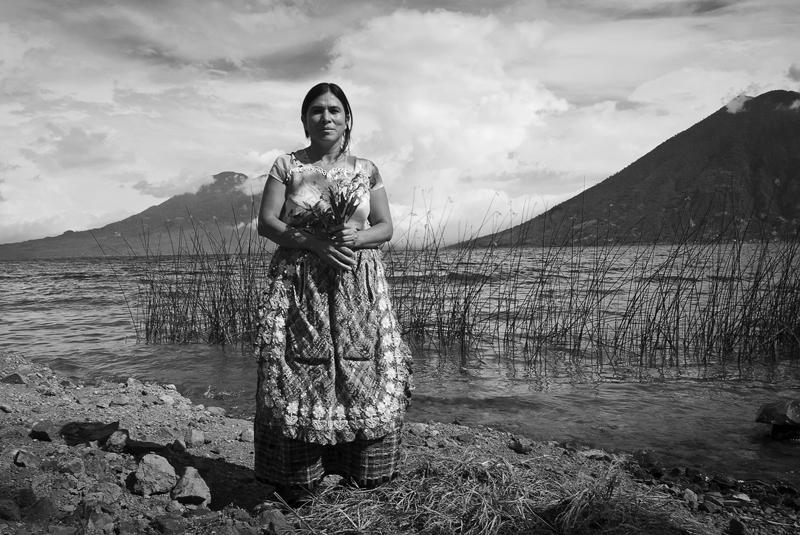Climbing the steps to Lane Hall, home of the U-M Women’s Studies Department, I anticipated an exhibit with a powerful statement on gender. When I walked through the door, I immediately I realized that preconception was misguided.
Fran Antmann’s photography is indeed incredibly powerful–but rather than being women- or gender-specific, it casts a wider net, looking at humanity through the lens of indigenous communities in Guatemala. Antmann captures the relationship of these communities with their natural environment–especially water, because the ones she photographed live along the banks of Lake Atitlan–and with traditional Mayan culture and rituals.
Taking in the handful of black-and-white photos immediately inside the front doors, you’d be hard-pressed to determine whether the photos were taken recently or long ago; the landscapes and people within them appear largely untouched by time. It’s only when you see additional pieces in the lobby, with glimpses of items like watches, that the images reveal themselves as modern. Antmann took them from 2006 to 2017, yet somehow the exact timing feels irrelevant. Her images are steeped in tradition, giving them a weighty, enduring quality that transcends time and fleeting trends. You’re left with the sense that they’d be just as true, just as relevant, whether taken decades ago or in the years to come.
Every image is arresting and demands your full attention. Though the subjects are different, the images share haunting undercurrents. There’s a palpable sense of mysticism, religion, and otherworldliness–perhaps not surprising, given her focus on indigenous healers. Most are captured outside, but one that I found particularly compelling was taken indoors, in a completely barren room in which two women attend to a child. I imagined one to be the healer giving medicine and the other, who holds the child’s mouth open, to be the mother; her face is filled with love and firm resolve.
We’re given slices of both everyday life and special ceremonies, moments from mundane to spiritual. The subjects’ stoic expressions feel simultaneously intimate and detached. We’re left to fill in the blanks ourselves as to whether the moments are somber, celebratory, or somewhere in between.
After taking in her documentary exhibit, I was left wanting more. If you end up with the same craving, know that Antmann created a book out of this photography project, Maya Healers: A Thousand Dreams–it was a finalist for the 2017 Lucie Photo Book Prize and received Honorable Mention from the 2018 Prix de la Photographie Paris awards.
The exhibit runs through December 7.


